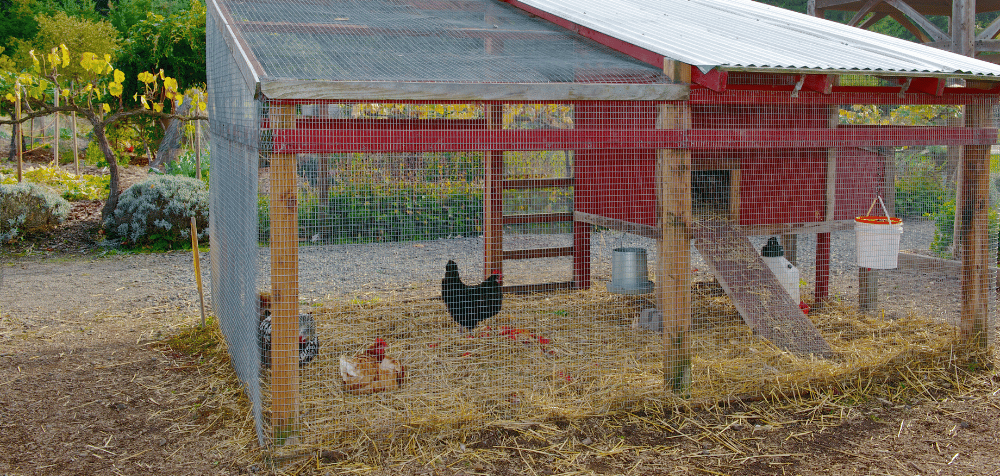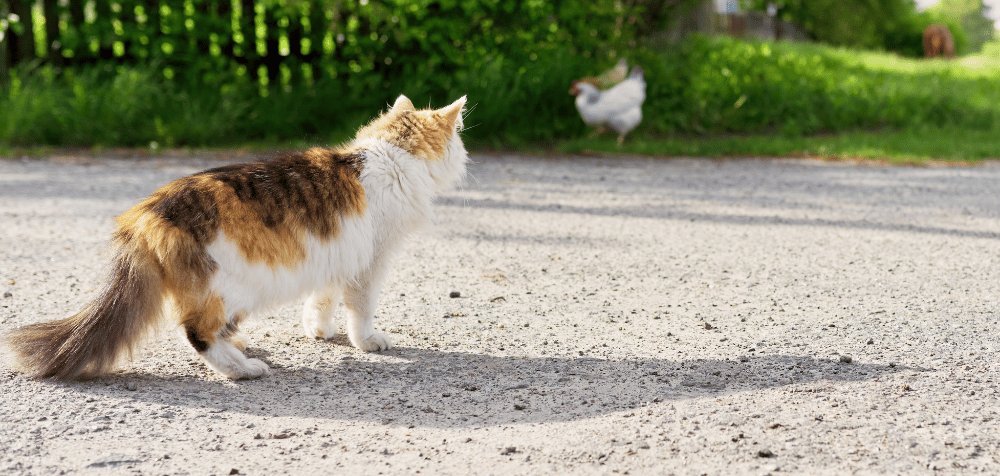If you want to ensure the safety of your flock, building a predator proof chicken coop is an absolute must.
Predators like raccoons, foxes, hawks, and even neighborhood dogs can pose a significant threat to your chickens.
In New Zealand where I live, we have weka’s, hawks, wild cats, stoats, and ferrets, not to mention hedgehogs, luckily, with the right design and materials, you can create a coop that keeps your chickens safe.
In this guide, we’ll go over everything you need to know about how to build a predator-proof chicken coop that will keep your chickens protected.
Why Is a Predator-Proof Coop Important?

Chickens may seem like resilient birds, but when it comes to predators, they can be quite vulnerable. Predators are clever and persistent, especially if they sense easy access to food.
A well-designed predator proof chicken coop provides the best line of defense between your chickens and various types of predators.
Common Chicken Coop Predators
Before we dive into the design process, it’s essential to understand the types of predators you’ll need to protect your chickens from. Here’s a list of some of the most common ones:
- Raccoons: These sneaky creatures are smart and have nimble hands that can open latches.
- Foxes: Foxes can dig under fences and slip into tight spaces.
- Hawks and owls: Birds of prey can swoop down from above to snatch chickens.
- Coyotes: Coyotes are powerful and can knock over poorly secured fences.
- Snakes: Smaller predators like snakes can target chicks and eggs.
- Neighborhood dogs: Even a friendly dog can turn into a threat if it gets excited.
Step-by-Step Guide to Building a Predator Proof Chicken Coop
Now that you understand the importance of predator protection, let’s get into the steps to building a solid and secure predator-proof chicken coop.
1. Choose the Right Location
Where you place your coop matters more than you might think. Choose a slightly elevated location to prevent water pooling and discourage burrowing predators.
Keep the coop in an open area where you can easily see it from your home, which can deter larger predators.
2. Build a Sturdy Coop Frame
The foundation of any good predator-proof chicken coop is a strong frame.
Use sturdy materials like treated wood or metal to create the basic structure. The goal is to make the coop strong enough to withstand predators trying to force their way in.
Make sure the walls are solid, and consider using extra supports at the corners for added strength.
3. Use Hardware Cloth, Not Chicken Wire

One of the biggest mistakes people make when building a chicken coop is using chicken wire. Despite its name, chicken wire is too flimsy to protect against most predators, as they can rip or chew through it.
Instead, use hardware cloth, which is a thick, welded wire mesh that’s virtually impossible for predators to break through.
Make sure to:
- Cover all windows and ventilation openings with hardware cloth.
- Secure the hardware cloth tightly using screws and washers to prevent it from being pulled loose.
- Extend the hardware cloth at least 12 inches underground around the perimeter of the coop to prevent burrowing animals like foxes from digging under.
4. Install a Secure Door and Latch
Predators like raccoons are surprisingly clever and can figure out how to open simple latches. To keep your coop secure, install heavy-duty locks or predator-proof latches that require more than just a quick flip to open. If you have doors for collecting eggs or cleaning the coop, make sure they’re just as secure.
A sliding bolt or combination lock can add an extra layer of protection to your predator proof chicken coop.
5. Elevate the Coop
Raising the coop off the ground helps protect your chickens in several ways. First, it makes it harder for predators to reach your flock. Secondly, it discourages pests like rats and snakes from hiding underneath the coop. Aim to elevate the coop by at least 18 inches so your chickens can still walk underneath while staying safe from ground predators.
6. Build a Secure Run
Chickens need space to roam, and a secure chicken run is just as important as the coop. Like the coop, the run should be enclosed with hardware cloth. Cover the top of the run with either wire mesh or a solid roof to protect your chickens from aerial predators.
Make sure the run has:
- Dig-proof fencing: Bury the fencing at least 12 inches underground to prevent predators from digging under.
- A secure roof: To keep birds of prey and climbing predators like raccoons out, your chicken run should be covered.
7. Electric Fencing for Added Protection
For those who live in areas with particularly aggressive predators, adding an electric fence can provide an extra level of security. Electric fencing around the perimeter of your coop and run will give predators a mild shock if they attempt to breach the enclosure.
Be sure to place the fence low enough to deter burrowing animals but high enough to ward off larger predators like coyotes and dogs.
8. Lock Your Chickens Up at Night
Many predators are nocturnal, meaning they hunt after dark. To keep your chickens safe, make sure they are locked inside the coop each night. Use automatic coop doors or establish a routine of manually closing and securing the door every evening at dusk.
9. Install Motion Sensor Lights and Cameras
Motion sensor lights and cameras can serve as a great deterrent for nighttime predators. When a light suddenly turns on, it can startle would-be attackers and send them running. Cameras also allow you to monitor your coop and respond quickly if you notice any unusual activity around your predator proof chicken coop.
10. Regular Maintenance and Inspections
Building a predator proof chicken coop isn’t a set-it-and-forget-it task. Regular maintenance is key to ensuring your coop remains secure. Check for any weak spots, holes, or signs of digging around the coop and run. Tighten any loose screws, and replace damaged sections of hardware cloth as needed.
Tips for Extra Security

Even with a well-designed coop, it’s always smart to go the extra mile. Here are a few additional tips to ensure your predator-proof chicken coop remains effective:
- Trim nearby trees: Predators like raccoons can use branches to climb into your chicken run.
- Add a skirt to the perimeter: A wire apron or skirt laid flat on the ground around the run can prevent digging.
- Use decoys: Owls or other predator decoys can sometimes scare away smaller predators.
- Train your dogs: If you have dogs, train them to guard the coop without disturbing the chickens.
Final Thoughts
Building a predator-proof chicken coop may take some extra time and effort, but it’s well worth the peace of mind knowing your chickens are safe.
By following these steps and using sturdy materials like hardware cloth, secure latches, and a solid foundation, you’ll create a coop that can stand up to even the most determined predators.
Remember, no coop is 100% predator-proof, but the more layers of protection you add, the better your chances of keeping your flock safe.

